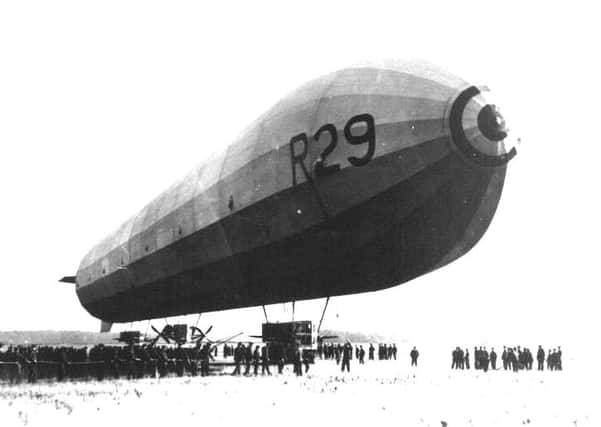First squadron takes to sky


Cramlington was the first Royal Flying Corps (the forerunner of the RAF) station to open in the north east in 1915 as a direct result of German airship attacks, the dreaded Zeppelins, on the area earlier in the year. A squadron of BE2cs were duly dispatched and were up and running as a squadron by December 1915.
Patrols were sent out on a regular basis, but Zeppelin L16 still managed to evade defences on April 2, 1916, dropping 23 bombs on Ponteland and Stamfordham, 11 on Cramlington and seven on Broomhill, while L22 crossed the coast near Berwick and bombed the Borders.
Advertisement
Hide AdAdvertisement
Hide AdDespite that, Cramlington continued to operate as an airfield throughout the rest of the war, then in 1918 it was used as a base for the training of much-needed pilots. Before the war seeing an aeroplane in the skies around the area would be a great cause of excitement. However, during 1918 they would’ve been forgiven for looking nervously up when seeing an airship, but they needn’t have worried.
The British produced their own airships, called Blimps, and one such, R29, built by Armstrong Whitworth, used Cramlington as a base. Its chief role was to look out for U-boats in the North Sea.
At 1.30pm on Sunday, September 29, the crew of R29 spotted a faint oil slick off Newbiggin Point. HMS Ouse was notified by Aldis lamp from the blimp, but the ship couldn’t detect it. Asking the blimp to shine a light over it the R29 instead dropped a 230lb bomb right on the spot. The Ouse joined in and dropped a couple of depth charges while R29 released another bomb.
HMS Star and two trawlers could smell blood and joined in the hunt for the U-boat. By 2.30pm large quantities of oil were bubbling to the surface. Intelligence reports later confirmed the sinking of UB 115.
Advertisement
Hide AdAdvertisement
Hide AdThe British airship R29 had clearly played an important role in the locating and then the destruction of a U-boat that was bent on creating havoc among shipping off the north east coast.
It was decided to build an airship station next to the airfield. A massive shed was only completed as the war came to an end and it was never used operationally. The building briefly housed a private commercial blimp, used for advertising between the wars but the shed was eventually demolished in the late 1960s.
The project has identified some 20 casualties attached to the RFC/RAF with connections to the North Tyneside area. Some of these are still undergoing research, but 15 are now available for the public to peruse.
The Northumbria World War One Project welcomes anyone with information on any of the casualties of the Great War from the North Tyneside area or anyone who wishes to become involved in research. Our website is northumbriaworldwarone.co.uk or call in to our office at B9 in the Linskill Centre in North Shields is open from 10am to 4pm Monday to Friday or you can contact me at [email protected]